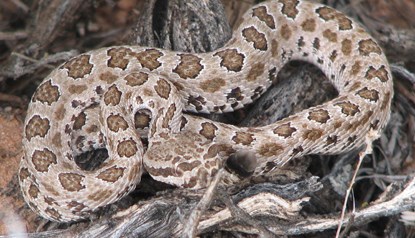
NPS Photo Lynne Mager Reptiles are among the most conspicuous animals found in the monument. They can be seen from early March through late October and are most active on warm, sunny days. Lizards hunt prey that includes insects, spiders, other lizards, scorpions, and ants. According to the latest survey conducted, nine species of lizards were identified as monument residents. Lizards are most active on warm, sunny days and temperate evenings, and are commonly seen sunbathing on rock exposures throughout the park. In colder temperatures they hibernate, relying on food stored as fat in their tails for nutrition. One species, the Plateau Striped Whiptail, reproduces through parthogenisis. All individuals in the species are female, and the young are exact clones of their mother. 
The midget-faded rattlesnake, a subspecies of the western rattlesnake, is the only venomous snake found in the monument. They eat lizards, small rodents, chipmunks, and toads. This snake, like all other snakes found here, prefers to avoid human contact. If you see a snake, remember not to pick it up. Any snake can bite if it feels cornered or is picked up. Don't reach into crevices or small caves where snakes may be resting. Go to Photo Gallery to see more reptile snapshots. |
Last updated: April 29, 2025
